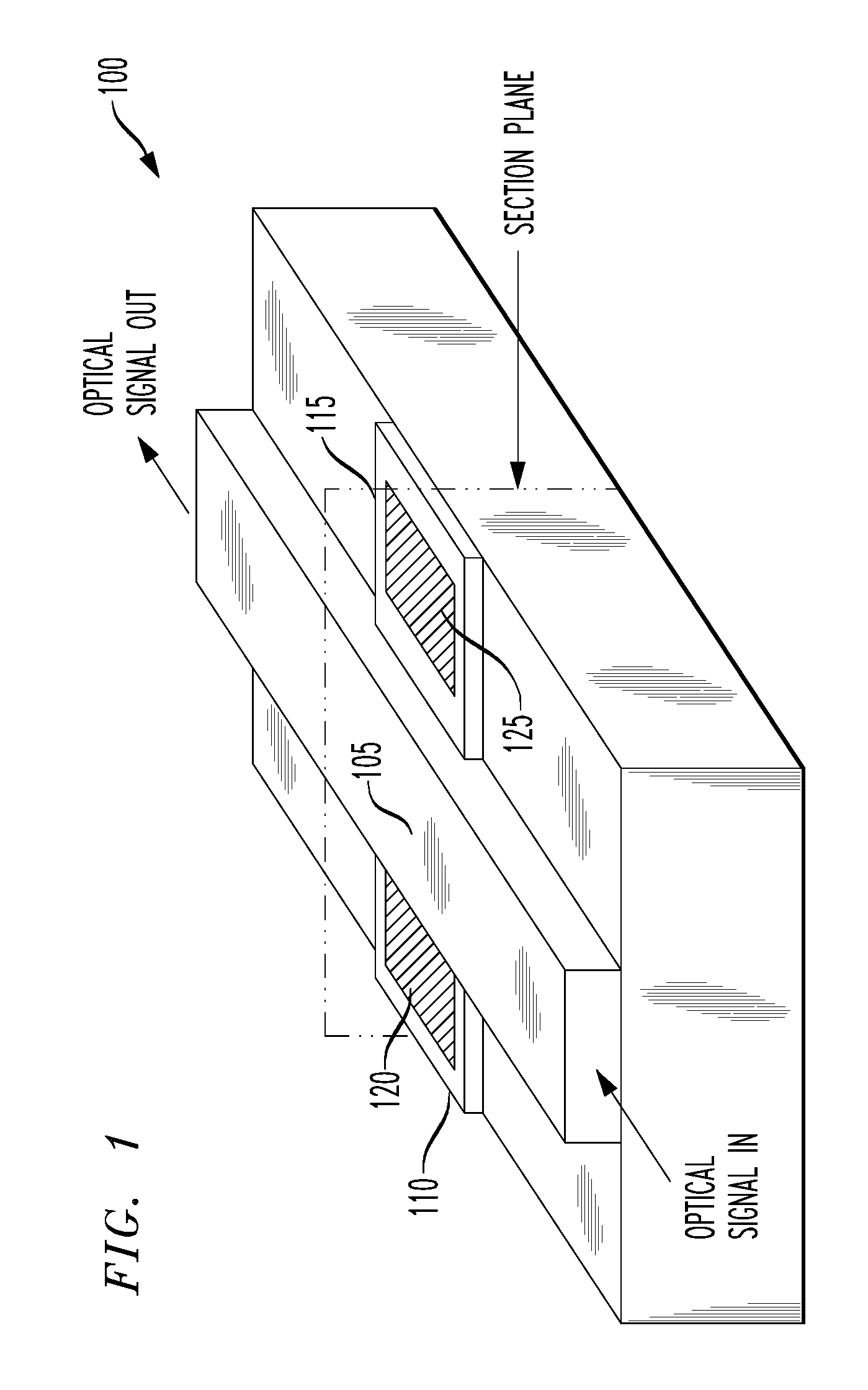High speed semiconductor optical modulator
a high-speed semiconductor and optical modulator technology, applied in the field of communication systems, can solve the problems of uneven response of traditional devices, dc power consumption, and different requirements for activating devices
- Summary
- Abstract
- Description
- Claims
- Application Information
AI Technical Summary
Benefits of technology
Problems solved by technology
Method used
Image
Examples
Embodiment Construction
[0020]Herein, the various semiconductor structures may be fabricated from various semiconductors, e.g., silicon or compound semiconductors, by conventional micro-fabrication methods.
[0021]Herein, the various optical waveguide cores may be covered with one or more top optical cladding layers, e.g., silica glass layers.
[0022]Herein, electrodes may be fabricated of metal and or heavily doped semiconductor, e.g., doped polysilicon, by conventional micro-fabrication methods.
[0023]Herein, maximum cited concentrations of positive and negative charge carriers provide lower bounds on concentrations of respective p-type and n-type dopants in described semiconductor structures.
[0024]Embodiments of the present invention are particularly well suited for high speed, highly integrated, cost effective, large-scale applications of communication systems or subsystems. The CMOS compatibility of this design makes it appropriate for high-volume fabrication. The significant improvement in device response...
PUM
| Property | Measurement | Unit |
|---|---|---|
| DC bias voltage | aaaaa | aaaaa |
| voltages | aaaaa | aaaaa |
| voltages | aaaaa | aaaaa |
Abstract
Description
Claims
Application Information
 Login to View More
Login to View More - R&D
- Intellectual Property
- Life Sciences
- Materials
- Tech Scout
- Unparalleled Data Quality
- Higher Quality Content
- 60% Fewer Hallucinations
Browse by: Latest US Patents, China's latest patents, Technical Efficacy Thesaurus, Application Domain, Technology Topic, Popular Technical Reports.
© 2025 PatSnap. All rights reserved.Legal|Privacy policy|Modern Slavery Act Transparency Statement|Sitemap|About US| Contact US: help@patsnap.com



